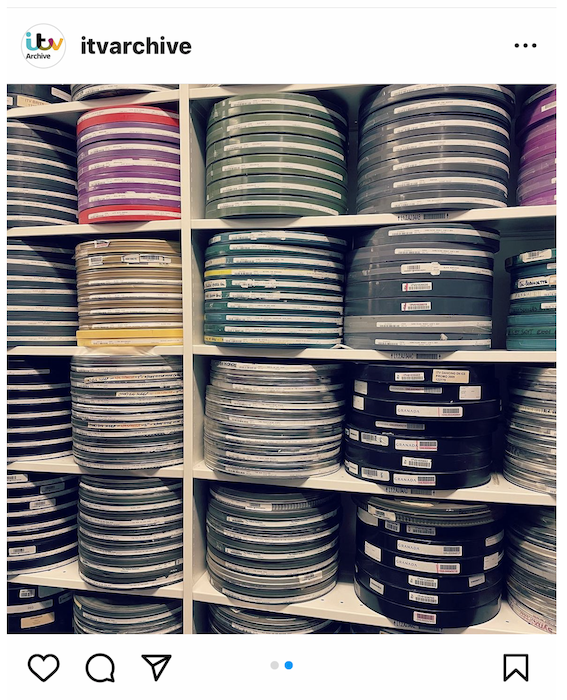Film Archive Collections : Appreciating their value
2 November 2023Historical collections come in various forms, each with its unique charm and significance. From paintings and sculptures to artefacts and documents, the world of museum collections is diverse and fascinating. Among these treasures, museum film archive collections stand out as a truly exceptional category, offering distinct value and a unique way to preserve history and culture. In this article, we will explore the merits of museum film archive collections
-
Dynamic and Immersive Experience
Film archive collections offer a dynamic and immersive experience that sets them apart from other forms of historical preservation. While paintings and sculptures can be visually striking, film engages our senses on multiple levels. It combines moving images, sound, and narrative to create a vivid and emotionally charged journey through time and culture. In contrast, a static painting or an artefact can only really convey a fragment of the story.
-
Preservation of Historical Moments
One of the most distinctive features of film archive collections is their ability to capture historical moments in their truest form. In comparison to documents or photographs, which may provide static glimpses of history, films offer a real-time recording of events and far greater context. They provide a window into the past, enabling viewers to witness history unfolding, be it a world-changing political event, a milestone in human achievement, or a simple snapshot of daily life from bygone eras.
-
Cultural Exploration
The film archive collections within museums are like time machines that can quickly transport us to different cultures and eras. They document customs, traditions, and ways of life, allowing us to explore and appreciate the incredible diversity of human societies. Unlike static artefacts or even written records, film brings the sights and sounds of the past to life. This immersive experience deepens our understanding and empathy for other cultures which are often very different from our own.
-
Accessibility and Outreach
One of the significant advantages of film archive collections is their accessibility. In the modern digital age, these film collections can be easily shared with a global audience via multiple media channels. Museums can host film screenings, create online exhibits, and collaborate with educational institutions to reach a broader demographic. This accessibility fosters greater engagement with museum collections, making them a valuable educational resource for both schools, universities and the general public.
-
Artistic Expression and Innovation
While other collections such as paintings and sculptures are largely static in nature, film archive collections offer a broader platform for artistic expression and innovation. Filmmakers explore storytelling, cinematography, and special effects, pushing the boundaries of the medium. Museum film archive collections include not just historical records but also artistic achievements, from experimental and avant-garde films to cinematic masterpieces that redefine the art of storytelling.
-
Interdisciplinary Research
Museum film archive collections support interdisciplinary research in a way that other collections cannot. Films are a combination of visual art, storytelling, and often, sound design. Scholars from various fields, including art history, cultural studies, anthropology, and sociology, can draw from these collections to enrich their research and gain a more comprehensive understanding of historical events and cultural dynamics.
-
Engaging Public Discourse
Film archive collections stimulate public discourse and dialogue more effectively than many other forms of museum artefacts. A well-curated film collection can provide a platform for meaningful discussions on various topics, such as history, politics, social issues, and artistic expression. These screenings or exhibits encourage viewers to engage in debates, further enriching the educational and cultural value of museum collections.
-
Technological Evolution
Film archive collections continue to evolve with technology, adapting to the changing media landscape. As the digital age progresses, museum collections transition from traditional film reels to high-definition digital formats, ensuring the preservation of cultural heritage while remaining accessible to future generations. The adaptability of film collections demonstrates their long-term viability and relevance.
In conclusion, museum film archive collections offer a distinctive and multi-dimensional value compared to many other types of collections. They provide dynamic, immersive, and interactive experiences, allowing viewers to engage with history and culture in a more vivid manner. Films capture historical moments, explore diverse cultures, and serve as valuable educational resources. Moreover, they promote artistic expression and interdisciplinary research, fostering public engagement and enriching our understanding of the past. As technology advances, museum film archive collections continue to evolve, ensuring their long-term preservation and accessibility. While all forms of museum collections hold their unique worth, film collections play a vital role in enriching the world of cultural preservation and education.
If you would like to unlock the full potential of your own film archives and collections by ensuring that they are safely digitally preserved and that your reels are stored in accordance with the industry best practices then please contact the team at ITV Content Services who are responsible for the curation and preservation of the entire ITV Film and tape archive in Leeds and they will be delighted to share their considerable insight.
ITV Content Services
104 Kirkstall Road
Leeds
LS3 1JS
www.itvcontentservices.com
Email:content.services@itv.com




